There are many classic marijuana strains that have been around for centuries. Some of the classic strains have become parent strains to the top marijuana plants in the world today. Read on as we discuss the evolution of marijuana and how that led to the cultivation of the most famous strains of our time.
Table of Contents
- 1.This History of Cannabis
- 2.Worldwide Weed Timeline
- 3.2737 BC
- 4.2000-1400 BC
- 5.1550 BC
- 6.1213 BC
- 7.450-200 BC
- 8.207 AD
- 9.1000 AD
- 10.1025 AD
- 11.1300 AD
- 12.1500 AD
- 13.1798
- 14.1839
- 15.1900
- 16.Cannabis Strains in the United States
- 17.Regional Uses
- 18.What is a strain?
- 19.Types of Weed
- 20.Cannabis Indica
- 21.Cannabis Sativa
- 22.Cannabis Hybrid
- 23.Cannabis Ruderalis
- 24.Landrace Strain vs. Modern Hybrid Strain
- 25.The Connection between Terpenes and Potency
- 26.Old School vs. Modern Strains
- 27.Haze Brothers: A Brief History
- 28.High Times Cannabis Cup
- 29.Are Classic 60s Strains still available for purchase?
- 30.Most Famous Strains of All Time
- 31.Uplifting
- 32.Acapulco Gold
- 33.Strawberry Cough
- 34.Lemon Skunk
- 35.Euphoric
- 36.Cherry Pie
- 37.White Widow
- 38.Purple Punch
- 39.Focused
- 40.Harlequin
- 41.Trainwreck
- 42.Sleepy
- 43.Northern Lights
- 44.OG Kush
- 45.Skunk No. 1
- 46.Energetic
- 47.Super Silver Haze
- 48.Green Crack
- 49.Relaxed
- 50.Blue Dream
- 51.Cannatonic
- 52.Girl Scout Cookies
- 53.Creative
- 54.Durban Poison
- 55.Jack Herer
- 56.Sociable
- 57.Sour Diesel
- 58.Island Sweet Skunk
- 59.Final Thoughts
This History of Cannabis
Classic cannabis strains have a rich history throughout the world. Here, we travel through time to see how perception and uses have changed within different cultures and regions.
Worldwide Weed Timeline
2737 BC
This year is the earliest record of cannabis being used for its medicinal qualities. Emperor Shen-Nung recognized its treatment properties for many illnesses.
2000-1400 BC
Nomadic Indo-European and Hindu peoples used cannabis in steam baths and burned cannabis seeds in burial rituals.
1550 BC
Egyptians utilized medical cannabis to treat inflammation and other health issues.
1213 BC
Cannabis pollen was recovered from the mummy of Pharoah Ramesses II, who died this year.
450-200 BC
Greek doctors Dioscorides and Claudius Galen prescribed cannabis for toothaches and earaches and alleviated childbirth pain.
207 AD
The first recorded physician used a mixture of wine and marijuana to knock out patients before surgery.
1000 AD
Arabic scholars al-Mayusi and al-Badri recorded their ideals of cannabis as a prime treatment for seizures.
1025 AD
A Persian writer published “Avicenna’s Canon of Medicine,” stating that cannabis effectively treats gout, infections, edema, and migraines.
1300 AD
Arabians bring weed to Africa from India, which leads it to spread over the continent. Cannabis was used to treat fever, malaria, asthma, and dysentery.
1500 AD
The Spanish brought cannabis to America to use hemp for clothing and other textile products.
1798
Napoleon took cannabis back to France from Egypt, and scientists researched it for its pain-relieving and sleep-promoting qualities.
1839
Irish doctor William O’Shaughnessy introduced the medicinal benefits of cannabis to Western medicine. Pharmaceutical use of weed rose quickly after that.
1900
People used medical cannabis to treat nausea, rheumatism, and labor pain. It was even available over-the-counter in many areas of the world.
Cannabis Strains in the United States
- The 1600s: Hemp cultivation was widely utilized to make clothing, rope, and ship sails. In 1619, the Virginia Assembly passed legislation to require that all farmers grow hemp and a few states even traded hemp legally.
- 1840: Marijuana became widely approved in mainstream medicine and was sold in over-the-counter medications.
- 1850: The U.S. Pharmacopeia added marijuana to its’ list. Healthcare providers use it to treat opioid withdrawal, chronic pain, appetite loss, and nausea.
- 1862: Vanity Fair advertised hash edibles as a fun stimulant that could help others be happy and less anxious.
- 1906: The Food and Drug Act demanded that all cannabis products state this on their labeling.
- 1900-1930: For years, marijuana was used in the mainstream medical community for health benefits. However, that changed as it became associated with Mexican immigrants. Due to their recreational drug use, anti-drug advocates promoted fear and prejudice by labeling it the “Mexican Menace.”
- 1914-1925: A widespread prohibition effort encouraged twenty-six states to pass laws prohibiting cannabis.
- The 1930s: The Great Depression resulted in an employment loss for thousands of Americans. Mainstream media began to falsely report that marijuana use was linked to crime and violence. At the same Harry Anslinger began a campaign to criminalize marijuana, claiming that it led to psychosis. As a result of these combined efforts, by 1936, all states had introduced marijuana regulation laws.
- 1936: Reefer Madness debuted, and it showed marijuana as a drug that could lead to extreme violence and mental disorders.
- 1937: The Marijuana Tax Act was passed, restricting cannabis use to those who could afford a significant excise tax.
- 1942: The U.S. Pharmacopoeia removed marijuana from its’ list, and physicians began to discredit marijuana as having little to no medicinal use.
- 1944: The New York Academy of Medicine published a report stating that classic marijuana strains had only mild psychoactive effects. It was not received well.
- 1952: The Boggs Act was passed to establish significant penalties for marijuana offenses.
- The 1960s: Marijuana gained popularity among college students, activists, hippies, and more. President Kennedy and Vice President Johnson detailed reports that found that marijuana was not a gateway drug, nor did it encourage violence.
- 1970: Congress approved the Controlled Substances Act, which placed marijuana as a Schedule I controlled substance. This law made it difficult to study marijuana for its’ medicinal benefits. However, Oregon, Maine, and Alaska still re-decriminalized marijuana.
- 1972: The Shafer Committee recommended the decriminalization of marijuana for personal use; however, Nixon disregarded their recommendation.
- 1976: The parents’ movement against marijuana was started.
- 1982: Nancy Reagan founded the “Just Say No” campaign.
- 1983: The Drug Abuse Resistance Education program was created, but the government later cut the DARE program’s funding as research proved inadequate for preventing youth from using drugs.
- 1986: President Reagan passed The Anti-Drug Abuse Act raising penalties for marijuana use.
- 1989: President George H.W. Bush campaigned for a “New War on Drugs.”
- 1996: California approved Prop 215, legalizing cannabis for medicinal use at the state level.
- The 2000s: Thirty-six states plus Washington D.C. have legalized or decriminalized weed. It is still federally illegal; however, marijuana advocates are fighting hard to pass legalization bills.
Regional Uses
- Egypt– glaucoma and inflammation
- China- over 100 cannabis medications for different ailments
- India– Anti-phlegmatic qualities, anesthetic, leprosy, dysentery, fever, cognitive functions, sleep assistance, spiritual uses
- Greece– inflammation, earaches, swelling, spiritual rituals
- Rome– gout, arthritis, chronic pain
- Arabia- chronic pain, migraines, syphilis
- England– menstrual cramps, childbirth, muscle spasms, convulsions, insomnia
What is a strain?
Cannabis strains are considered to be a pure or hybrid genetic variation of the plant Genus Cannabis. There are three species: Cannabis Sativa, Cannabis Indica, Cannabis Ruderalis. Ruderalis is not as popularly known; however, it is a derivative of cannabis with the lowest THC levels. Although they are popular among the cannabis community, hybrids are not considered a species as they are made of Sativa and Indica, with typically one or the other dominating the gene pool.
For marketing and medical marijuana purposes, cultivators will develop different varieties to highlight specific desired characteristics, such as:
- Color
- Density
- Flavor profile
- Aroma
- Medicinal benefits
- Psychoactive effects
- Cannabinoid percentages
- THC vs. CBD
Those within the cannabis community report that there are close to eight hundred unique weed strains worldwide, but that number has increased steadily throughout the years. Different strains are created yearly as botanists experiment with crossing classic marijuana strains with hybrids to change their genetic qualities.
Types of Weed
There are four different types of the Cannabis plant:
Cannabis Indica
Cannabis Indica is commonly found growing in the dryer climates of the Middle East. They are short and bushy with large, dark green leaves. The buds tend to be much denser in Indica versus Sativa.
Indica strains have higher CBD content than Sativa. Most Indica weed contains an almost even amount of CBD and THC levels. Since Indica tends to be relaxing, they’re best for nighttime use due to the intense body high.
There are several reasons people may smoke Indica cannabis flower, including:
- Relieving intense body and muscle pain
- Reducing nausea and increasing appetite
- Easing insomnia and promoting healthy sleep
- Reducing anxiety symptoms
Cannabis Sativa
Cannabis Sativa does well in warmer regions of the Earth and can thrive with high humidity levels. The typical locations where Sativa strains are grown are Central America, South America, and Southeast Asia. Sativa is tall and slender with thin, light green leaves.
Many people report that smoking Sativa makes them feel energized, creative and focused. These psychological effects make Sativa strains best for daytime use because using them at night may cause insomnia due to the higher THC levels.
There are many reasons people use Sativa cannabis strains, including:
- Easing depression symptoms
- Headache and Pain relief
- Decreasing Nausea
- Fighting appetite loss
- Better Focus
- Head High over Body High
Cannabis Hybrid
A hybrid is a combination of Cannabis Indica and Cannabis Sativa. The amounts can vary depending on the strain, but there are ones that balance evenly, and on the flip side, there are Indica and Sativa dominant hybrid strains. The amount of each, along with cannabinoid presence, will determine the effects you will experience.
Cannabis Ruderalis
Cannabis Ruderalis is a low-THC cannabis plant that is native to Asia and Europe. It is a short and bushy plant with sturdy stems and light green, chunky buds. While it will not produce a significant high due to THC levels, it auto flowers within 21-30 days making it ideal for some growers. Along with its short growing season and ability to survive in extreme climates, it is a versatile strain that can be used like hemp for textile purposes and can be smoked or ground for edibles and tinctures.
Landrace Strain vs. Modern Hybrid Strain
The word landrace originates from the Danish language and simply means “origin.” Landrace strains are the oldest known strains in the cannabis world. They traveled from the Himalayan mountains all over the world and have become the parent strains to many well-known hybrids we use today. The majority of today’s best cannabis strains are hybrid, meaning they were selectively produced for desirable genetic qualities such as terpene production, cannabinoid preferences, and THC potency.
The Connection between Terpenes and Potency
Terpenes are organic chemical compounds found in some herbs, most popularly known in connection to the cannabis plant. Terps can provide desired characteristics like flavor profile, aroma, and color. They can be added to cannabis flowers, tinctures, topicals, and edibles to increase psychoactive effects.
Although terpenoids do not affect cannabinoid potency, they can work with cannabinoids like THC and CBD to enhance health benefits. They have been linked to reducing the symptoms of certain mental and mood disorders, anxiety, and depression. Two popular terpenes are linalool (found in Lavender) and a-Pinene (found in rosemary) are known to assist with reducing anxiety and increasing mental clarity.
Old School vs. Modern Strains
For decades, people illegally smuggled cannabis into North America from outside countries in previous generations. Sativa came from regions such as Thailand, South Africa, and Mexico, while Indica originated from Afghanistan and India. Many classic strains got their names from the area of their origin.
In modern days, cannabis is legal in many states. Since it is somewhat regulated, a lot of it is cultivated in U.S facilities with top-notch resources and plenty of funding. Not only has quality and availability significantly improved, but the buds themselves have become more potent. Within classic marijuana strains, THC levels rarely got above ten percent. Today, we have legendary strains with THC content above 28 percent.
Haze Brothers: A Brief History
The two Haze brothers, simply known as R. Haze and J. Haze, are cannabis connoisseurs who were said to have created the original Haze strain in the 1970s in Santa Cruz, California. They were said to have bred a Mexican landrace strain with a Columbian strain to create the Original Haze breed. It has since been cross-bred with a Thai landrace strain to create many classic cannabis strains. The characteristics of a Haze strain are earthy, citrus, and spicy with a cerebral high that energizes its’ user, making it a perfect daytime strain.
There are now hundreds of classic cannabis strains that come from this West Coast legendary strain; many of them claim the title of cannabis cup winner. Here are a few:
- Super Silver Haze
- Purple Haze
- Super Lemon Haze
- Amnesia Haze
- Mango Haze
- Blue Haze
- Strawberry Haze
High Times Cannabis Cup
The High Times Cannabis Cup is the most significant cannabis festival celebrating all things weed in the world. There are competitions, seminars, expositions, musical concerts, new products, cannabis strain reveals, fun activities, and many munchies. The festival is hosted in many states that have legalized marijuana for adult use. The Cannabis Cup stands as the central gathering place for the cannabis community to network and celebrate cannabis royalty. The competitions showcase and award the best marijuana brands worldwide, helping shine a light on the people that put their all into the craft.
Amsterdam held the original Cannabis Cup in 1988, which later expanded to the U.S. after states updated their legalization laws. Arizona, California, Colorado, Washington, Massachusetts, Michigan, Oklahoma, Alaska, Illinois, and Oregon have all held Cannabis Cups.
Are Classic 60s Strains still available for purchase?
Yes, classic 60s strains are still available for purchase. You can easily buy shroom spores online from reputable suppliers and grow your own psychedelic mushrooms at home. With just a few clicks, you can have access to a wide variety of strains from the 60s and beyond.
Most Famous Strains of All Time
Whether you have a classic strain or a hybrid strain, each one is known for its specific qualities. Here, we list the top 20 best weed strains of all time and the effects you can expect to feel with each one.
Uplifting
Different strains make you feel different ways, and these provide happiness and positive feelings.
Acapulco Gold
- Acapulco Gold comes from Mexico and is one of the rarest strains
- It has 18 percent THC and one percent CBD
- It is a rare Sativa, one of the best marijuana strains of all time, and difficult to find
- The flavor and aroma are of chestnut and coffee
- It has a flowering time of around sixty to seventy days
- This old school weed is used to treat mood disorders, anxiety, and depression
- Acapulco Gold provides a happy, energetic, uplifted, and motivated cerebral high
Strawberry Cough
- Strawberry Cough has origins that are unknown
- It has 19 percent THC content and one percent CBD
- It’s thought to be a combination of Haze and Strawberry Fields
- It is a potent Sativa strain
- It has a skunky aroma and a hint of berry flavor
- It’s one of the best strains to treat mental disorders, anxiety, and depression
- The cerebral high will leave you feeling euphoric and energized
Lemon Skunk
- Lemon Skunk is similar to Super Lemon Haze and is from the Netherlands
- It has 19 percent THC and one percent CBD
- It comes from two special Skunk marijuana strains
- Lemon Skunk is a Sativa-dominant Hybrid
- It smells skunky and tastes of spicy lemon
- Medical patients choose this strain regularly for depression and stress
- The indoor flowering time is eight to nine weeks
- The high is cerebral and promotes happiness, energy, and creativity
Euphoric
This weed will melt away stress and allow you to feel happy and comfortable throughout the day.
Cherry Pie
- Cherry Pie comes from San Francisco, California
- It has 16 percent THC and one percent CBD
- It’s a cross between Granddaddy Purp and F1 Durban
- It has a sweet and sour cherry flavor that smells of berries
- The flowering time is eight to nine weeks indoors
- It’s used to treat mental and mood disorders and sexual dysfunction
- The high will leave you feeling happy, euphoric, and slightly aroused
White Widow
- White Widow originated in the Netherlands
- It has a lower 15 percent THC and one percent CBD
- It’s a cross between Brazilian landrace Sativa and South Indian Indica
- It’s a hybrid breed
- The flavor of White Widow is spicy and herbal with an earthy aroma
- The White Widow strain will make you feel euphoric, energetic, social, and creative
Purple Punch
- Purple Punch originated in Southern California
- It has 18 percent THC and zero percent CBD content
- It’s a cross between Larry OG and Granddaddy Purp
- It has a tart, grape flavor that smells of berries
- This strain is used to treat nausea, insomnia, stress, and body aches
- It provides a feeling of euphoria while leaving you relaxed and sleepy
Focused
If you’re looking for a strain that will help you focus on work or studies, these two are great places to start.
Harlequin
- Harlequin originates from Columbia, Switzerland, and Thailand
- It is a CBD strain with nine percent CBD and five percent THC
- It has many parent strains: Colombian Gold, a Nepali pure Indica strain, and Thai and Swiss landrace Sativa strains
- It has an earthy, musky aroma with mango flavors
- It’s used to treat chronic pain, inflammation, and ongoing anxiety
- This one provides pain relief while still maintaining an energetic, focused high
Trainwreck
- Trainwreck originated in Northern California
- It has 17 percent THC and 1 percent CBD
- It’s a cross between Thai and Mexican Sativa with unknown Indica
- It has lemon and pine flavor and aroma profiles
- It has a shorter outdoor flowering period than many Sativas; 8 weeks for indoor
- This strain can be used to treat anxiety, arthritis, PTSD, fatigue, and ADHD
- The effects are euphoric and cerebral encouraging creativity and boosting energy
Sleepy
Best taken at night, these strains will send you straight to bed. No sheep are necessary.
Northern Lights
- Northern Lights originated in Seattle, Washington
- It has 18 percent THC and 1 percent CBD
- Afghani and Thai parent strains created the Northern Lights
- Northern Lights is a potent Indica strain
- The flavor is piney while the aroma is earthy for the Northern Lights
- This pure Indica has an average of six to seven weeks of flowering time indoors
- Northern Lights is used to treat insomnia, chronic pain, anxiety, and stress
- It produces sticky buds with a powerful body high leaving you sleepy and hungry
OG Kush
- OG Kush originated on the West Coast and was first grown in Florida
- It is a popular strain with 18 percent THC and zero CBD content
- It’s a cross between Chemdawg, Lemon Thai, and the Hindu Kush
- OG Kush is a balanced hybrid breed and an excellent strain
- The flavor is sweet citrus, while the aroma of OG Kush is piney with a strong diesel smell.
- It has an average of eight to nine weeks of flowering time indoors
- Like Hindu Kush, OG Kush is used in helping treat stress, depression, anxiety, nausea, and appetite loss
- Users say OG Kush produces a euphoric, happy high leaving you carefree and hungry
Skunk No. 1
- Skunk No. 1 originated in California and later was brought to the Netherlands.
- It has 17 percent THC and 1 percent CBD
- Its parent strains are Afghani, Acapulco Gold, and Colombian Gold
- It is a balanced Hybrid breed
- The flavor aroma is overwhelming and skunky with a hint of tobacco aspects
- It has an average of nine weeks of flowering time indoors
- This marijuana is used to treat depression, anxiety, and appetite loss
- It produces an uplifting, creative cerebral high that leaves you relaxed and hungry
Energetic
While other strains may help you relax, these will provide energy and focus to your day.
Super Silver Haze
- Super Silver Haze is bred by Green House Seeds and won first place in the High Times Cannabis Cup several years in the late 1990s
- It has 20 percent THC and 1 percent CBD
- It’s a cross between Haze, Northern Lights, and Skunk
- This marijuana tastes of spicy citrus and smells herbal
- The outdoor flowering time is around 77 days, while indoors is 59 days
- Users say it treats nausea, appetite loss, depression, anxiety, stress, and pain
- Like Purple Haze, there is initially an uplifting, energetic head high that transforms into physical relaxation
Green Crack
- Green Crack originated from Ohio and was later given its name by Snoop Dogg
- It has 17 percent THC and one percent CBD content
- Its parent strains are Skunk No. 1 and an unknown strain
- It’s a potent Sativa that placed third in the 2015 Cannabis Cup
- It smells and tastes of citrus and tropical flavors
- The flowering time is approximately fifty days
- It’s used to treat anxiety, depression, stress, and mood disorders
- It’s a great daytime strain because it fights fatigue and provides focus
Relaxed
After a long day at work, try out any of these three old school strains and you’ll be relaxing in no time.
Blue Dream
- Blue Dream originated in California, on the West Coast
- It has 18 percent THC and low CBD
- It’s a cross of Blueberry and Haze
- Blue Dream is a Sativa dominant hybrid strain
- Flavor and aroma boast sweet berries
- It has an average of 65 days of flowering time
- This strain is used to treat nausea, depression, chronic pain
- Blue Dream produces a relaxing, body high, and balanced cerebral stimulation
Cannatonic
- Cannatonic originated in Spain, later cross-bred in US government labs
- It is known as the CBD Queen with 9 percent CBD and 4 percent THC
- It’s a cross of MK Ultra and G13 Haze
- It is a balanced 50/50 Hybrid
- The flavor is sweet citrus while the aroma is earthy
- It has an average of eleven weeks of flowering time indoors
- This strain is used to treat muscle spasms, migraines, fatigue, and chronic pain
- It produces a powerful, uplifting, and energetic high, leaving you extremely relaxed
Girl Scout Cookies
- Girl Scout Cookies originated in the Bay Area of California
- It has 19 percent THC and 1 percent CBD
- Its parent strains are OG Kush and Durban Poison
- It is an Indica dominant hybrid breed
- The flavor is sweet and minty with an aroma of vanilla
- It has an average of ten weeks of flowering time indoors to reach the prime age
- This cake strain is used to treat muscle spasms, nausea, appetite loss, and depression
- Users say it produces a happy, cerebral high, leaving you pain-free, euphoric, and hungry
Creative
As an artist, sometimes you need a boost to get the creative juices flowing. These bad boys will do the trick.
Durban Poison
- Durban Poison originated from Durban, South Africa
- It’s sold by Dutch Passion Seed Company
- It has an impressive 19 percent THC and one percent CBD
- Durban Poison is a pure Sativa, which makes excellent parent strains
- It has an herbal flavor and aroma with hints of pine and sage
- This strain has fat buds with many trichomes, Durban Poison is a strain great for edibles
- Durban Poison promotes creative qualities and provides better focus than many other strains
Jack Herer
- Jack Herer was created by Sensei Seeds and originated in the Netherlands
- It is named after the famous cannabis activist who wrote The Emperor Wears No Clothes
- It has 18 percent THC and one percent CBD
- Its parent strains are Haze, Northern Lights, and Shiva Skunk
- It has an earthy, pine smell with a spicy, herbal flavor profile
- It has heavy resin production and is one of the strongest strains
- It has a 50-70 day flowering time
- This old school weed is popular among the medical community for treating mental health disorders
- The cerebral high will leave you happy, focused, and ready to create
Sociable
Some weed strains are known for causing anxiety or paranoia, however, a few of them actually help to combat social anxiety and leave you feeling talkative and comfortable with others.
Sour Diesel
- Sour Diesel originated in Staten Island, New York
- It’s a potent strain with 19 percent THC and zero CBD content
- It’s a cross between Chemdawg and Super Skunk
- Sour Diesel is a potent Sativa
- The aroma profiles are pungent, and diesel
- It has an average of 77 days of flowering time outdoors
- Sour Diesel is used to help with stress, anxiety, depression, and pain
- This pure Sativa produces powerful euphoric effects and an energetic high
Island Sweet Skunk
- Island Sweet Skunk was first bred at Federation Seed Company in Canada
- It has 18 percent THC and one percent CBD content
- It’s a cross between Skunk No. 1 and Sweet Pink Grapefruit
- It’s a popular classic Sativa strain
- It smells sweet and skunky with a slight grapefruit taste
- The average flowering time indoors is seven to eight weeks long
- It’s used to treat anxiety, inflammation, and muscle spasms
- It produces an uplifting, energetic, and creative high
Final Thoughts
Some classics never go out of style, which is certainly the case for the classic marijuana strains discussed today. Within the cannabis world, it is easy for low-quality strains to circulate the market due to the number of cultivators. This is why it is essential to continue cultivating the original strains. People consider them classics because they have been around for centuries and set a higher standard in cannabis. That’s why many old schools strains are still available today and have been the parent strains for the best strains of our generation.

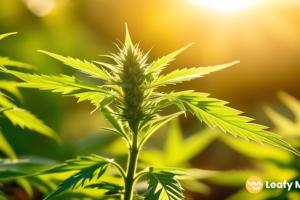
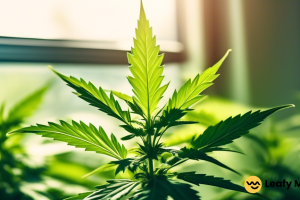





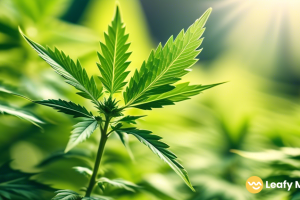
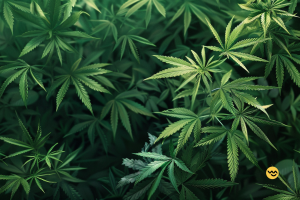
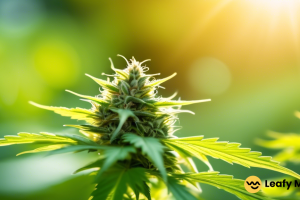
Leave a Reply